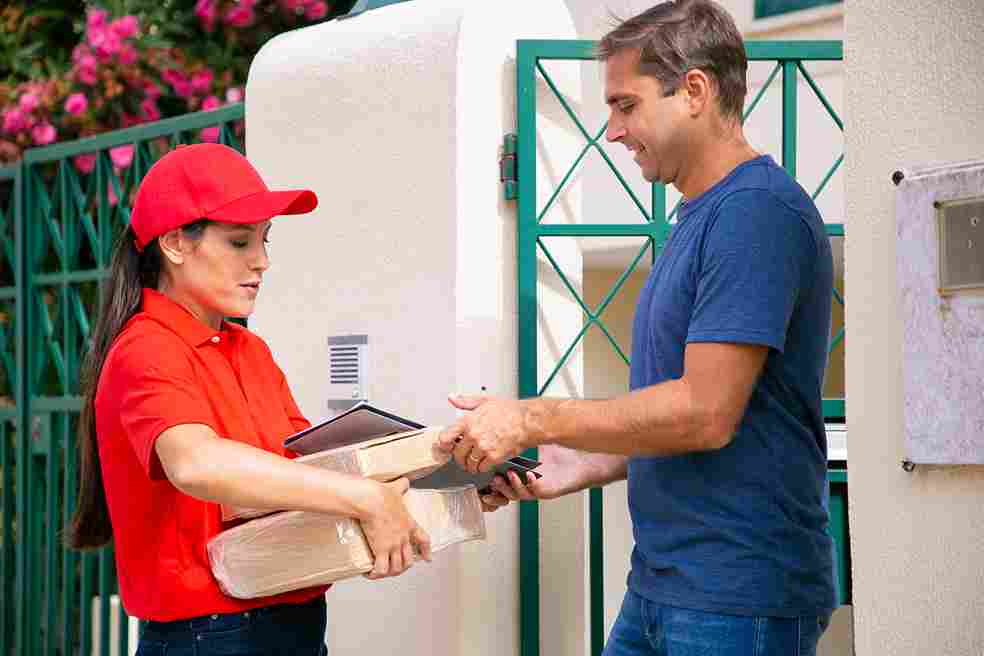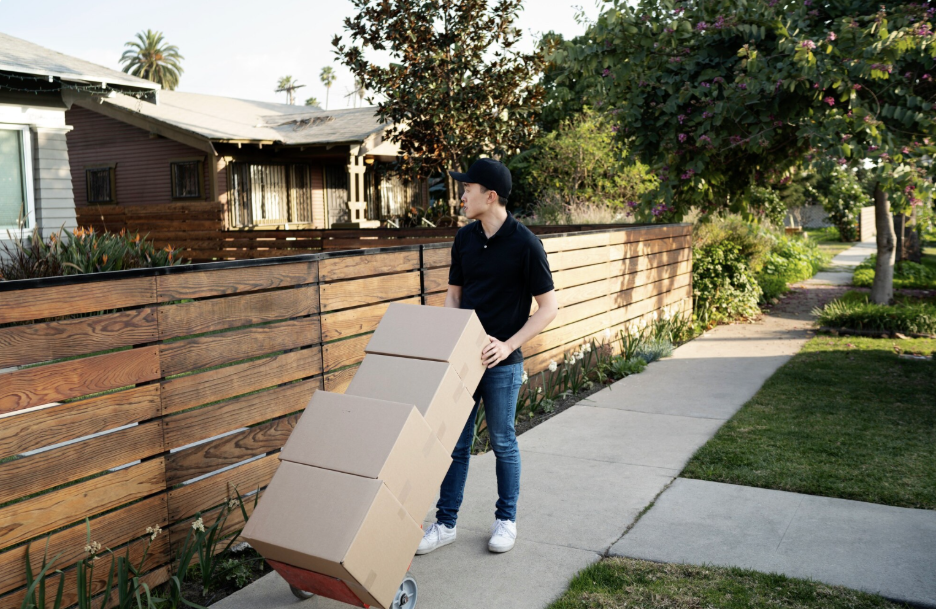



"I can’t go one holiday season without losing a few packages to thieves. It's infuriating "
- a real consumer venting it out on reddit.
It’s the most wonderful time of the year; for porch pirates.
Packages move faster than ever during the holidays, but not all of them make it home. Maybe you’ve experienced it too, that stolen package, taken right from your porch before you even knew it had arrived.
It’s more common than we think.
According to a 2024 report, porch pirates stole about $12 billion worth of packages in the past year, with roughly 58 million Americans falling victim in the last 12 months. And as the holidays roll in, people get more nervous; it’s natural, of course. Nearly nine in ten Americans admit they worry about losing a package this season. Also, 1 in 3 Americans have experienced package theft.
Even with new laws and smarter cameras, the problem hasn’t gone away. The 2025 SafeWise data shows that while total thefts dipped by about 13% from last year, each stolen package now costs more, around $143 on average, up from $132 in 2024.
When you add in what retailers spend on replacements, refunds, and shipping, the total impact climbs close to $37 billion a year.
So yes, it’s the season of joy but also the season of risk.
For merchants, every lost package means refund costs, customer frustration, and one more dent in already thin margins, especially with tariffs and shipping costs already squeezing profits.
Package theft remains a significant challenge for both consumers and merchants, even as annual reports suggest a modest decline.
Let's take a look:
Source: SafeWise 2025 Package Theft Report, with supporting data from ZFLO Technologies.
But these improvements come with context.
Most of the 2025 data was collected before the holiday shipping surge, a period when theft typically spikes. During December 2023, theft incidents rose by 48%, and during Prime Day 2024, by another 40%.
Historical data suggests that any annual decline may flatten once peak-season figures are included.
While total theft counts declined, the value per theft increased. This aligns with broader inflation trends and a shift toward higher-value online orders during Q4.
For merchants, these numbers aren’t just about single stolen packages, they reveal a bigger operational problem. Each theft can mean paying for a replacement, issuing a refund, and managing an unhappy customer.
Over time, those repeated losses cut into profit margins and weaken customer trust.

Not really. At least not in the same way.
Despite the efficiency of large logistics networks, 92% of e-commerce merchants report incurring significant costs from lost, stolen, or damaged shipments.
Both big and small retailers deal with fraud, shipping delays, and lost packages but small and mid-sized merchants feel the impact much more. For big retailers, it’s part of the cost of doing business. They’ve got insurance, refund systems, and volume deals that cushion the impact.
For small and mid-sized merchants, it’s a different story. Every missing package hits harder; a refund here, a replacement there, all getting straight into margin. Without insurance programs or carrier leverage, these costs quickly add up.
And customers don’t really care who’s at fault. 46% say a stolen delivery hurts their trust in the brand, and 37% say they wouldn’t buy again after it happens.
There’s also the timing problem. Porch piracy spikes during holidays, Prime Day, and black Friday- the same times small merchants rely on to hit their yearly revenue goals. When theft climbs, so does pressure on support teams, margins, and review scores; the three things small businesses can’t afford to lose at once.
So, yeah, both sides deal with it. But for smaller merchants, every stolen package feels personal.
And that leads us to the next question.
It’s only recent, but merchants are finally moving from reactive to preventive actions- using data, delivery control, and smarter communications to stop theft before it happens.
Most theft complaints start with confusion, not bad intent. The package says “delivered,” but the customer hasn’t seen it, and suddenly the customer support gets stuck in the middle.
That’s why merchants are putting more effort into simple, proactive communication. Real-time delivery alerts, ETA updates. And yes, follow-up messages now play a huge role in preventing porch piracy drama before it starts.
Many merchants send a short confirmation when an order is marked as delivered, a quick “We see your package has arrived, can you confirm?” It sounds small, but it helps customers double-check with family, neighbors, or building staff before filing a claim.
It also sets the right tone. And when customers feel informed, it’s far less likely to turn into a chargeback or a negative review. Additionally, it also enhances brand perception, costs almost nothing to set up, and cuts down on customer frustration when they reach support.
The easiest way to stop porch piracy is to avoid the porch or leaving the delivery unattended.
Merchants are offering customers safer delivery choices like pickup points, store collection, delivery to office addresses, or signature-required shipping, especially for higher-value items.
Merchants are starting to offer alternate pickup options.
Big retailers like Amazon, Walmart, and Target use lockers, curbside, and store pickup to keep deliveries safe and costs low. UPS Access Point and FedEx OnSite hubs do the same rerouting packages through verified pickup spots instead of risky porches.
Smaller merchants are catching up fast. Tools like HubBox and AfterShip Pickup let Shopify and BigCommerce stores offer the same choice.
AI-driven tools are starting to play a major role in identifying which addresses pose higher theft risks before the package even leaves the warehouse.
UPS Delivery Defense, for instance, uses AI to score delivery addresses based on loss frequency, returns, and delivery success rates. The software generates a “confidence score” so retailers can decide when to offer lockers, signature-required shipping, or hold-for-pickup options.
New tools are popping up that merge logistics with hardware like smart mailboxes that can verify, lock, and log deliveries automatically.
Smart mailbox systems are also entering the mix, connected delivery boxes that track every drop-off in real time, record who handled it, and send instant alerts if something seems off.
And while not every small merchant will invest in tech like that today, it’s a sign of where the market is heading: more visibility, less risk, and fewer “it never arrived” claims to fight later.

Even with smarter tools, secure pickups, and better communication, things still go wrong. Peak season brings higher order volume, higher theft, and higher replacement costs.
Holiday season has its own logic or illogic (may call it craziness as well)!- higher order volumes, tighter delivery windows, and more room for error. When packages go missing or arrive damaged, someone has to absorb the cost.
For small and mid-sized merchants, that “someone” is usually them.
When something goes wrong like a stolen delivery, a lost parcel, a damaged item, shipping protection helps merchants handle it without absorbing the full financial hit or risking a bad customer experience.
Shipping protection has the potential to prevent significant losses from fraud and shipping-related issues each year, giving merchants coverage with no out-of-pocket expenses when things go wrong.
And when done right, the results speak for themselves.
Recently a few well-known furniture retailers, introduced shipping protection and extended warranty programs, the impact was immediate:
The numbers told their own story:
“Shipping protection has made a visible difference. Damage claims don’t stall sales anymore, customers know they’re covered, and that’s all they need to buy with confidence.”
- David K. Operations Manager
And FYI, when you partner with the right provider, you get all these benefits handled for you, so you can focus on holiday sales while they take care of the post-purchase chaos.
Benefits include:
You can take every preventive measure, smarter logistics, better communication, alternate pickups, and still face risk. That’s just how the season works.
But the smart move is turning that risk into an advantage.
But adding layers like shipping protection changes what happens next. It keeps you covered when things go wrong and lets you stay focused on what matters.
Because at the end of the day, it’s better to be safe than sorry.